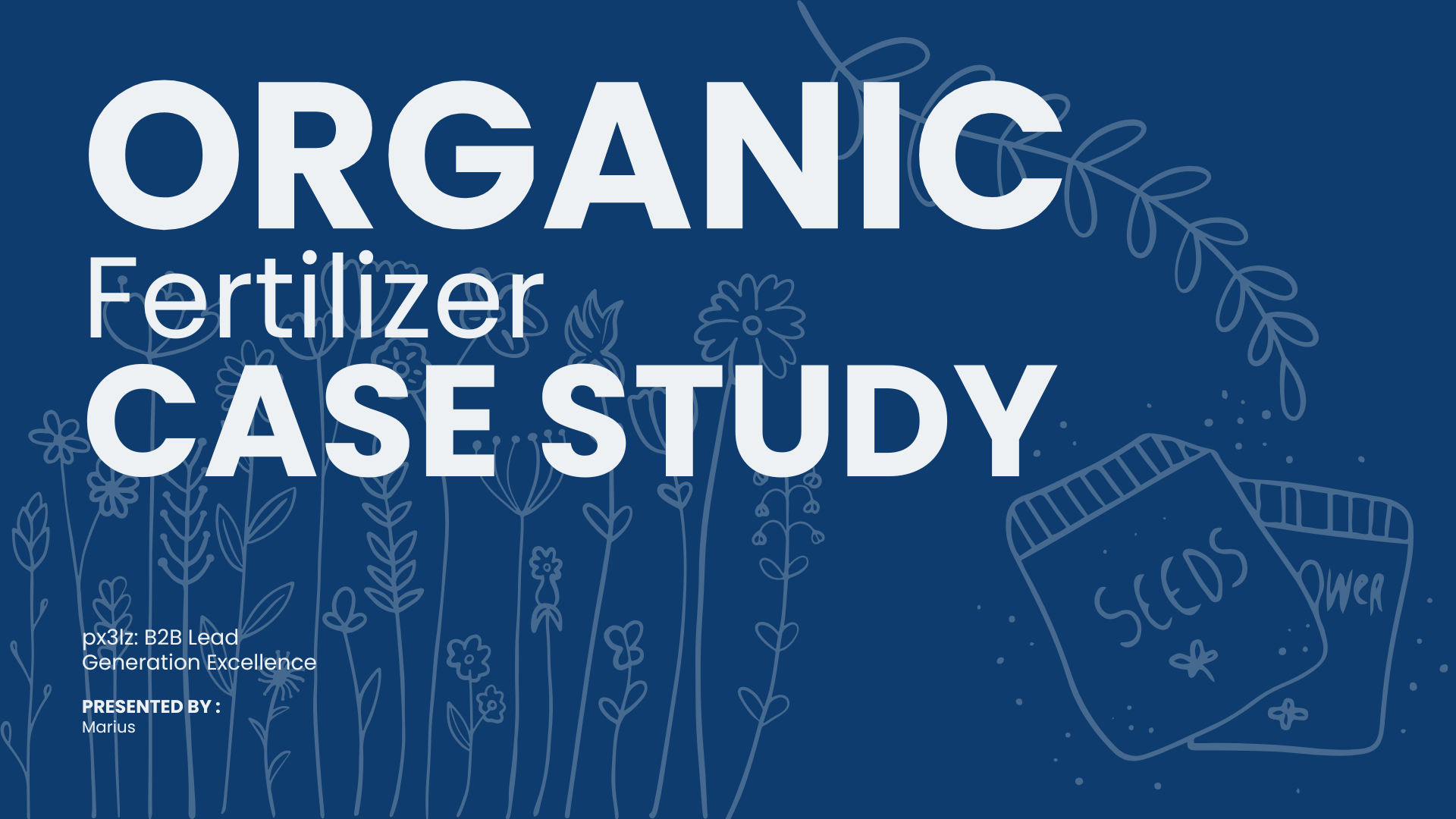Organic Fertilizer Lead Generation Case Study

Organic Fertilizers Market
In 2022, the global organic fertilizer market was valued at approximately $10–12 billion, with an expected compound annual growth rate (CAGR) of around 10–12% from 2022 to 2030. By 2030, the market could surpass $20 billion.
Challenges for Manufacturers
High production costs compared to synthetic fertilizers.
Lower nutrient concentration requiring higher application volumes.
Competition from inorganic fertilizers, especially in price-sensitive markets.
Opportunities for Manufacturers
Expansion in emerging markets with large agricultural sectors.
Development of cost-efficient production technologies.
Partnerships with organic food producers and certification bodies to strengthen supply chains.
Identify the Target Audience
Organic food producers who are actively looking for eco-friendly and high-quality fertilizers.
Stakeholders such as sustainability managers, procurement officers, or farm owners.
Define the Lead Magnet
Offer a downloadable PDF titled "Comprehensive Guide to Types of Organic Fertilizers".
- Types of organic fertilizers: Animal-based, plant-based, mineral-based.
- Benefits of each type for soil health and crop yield.
- How organic fertilizers align with organic certifications and standards.
Keyword Strategy
Focus on low-competition, high-conversion keywords:
- "types of organic fertilizers pdf" (primary keyword).
- "advantages and disadvantages of organic fertilizers"
- "organic fertilizer production process"
1.250 global monthly Search-Volume with low competition.
Create Supporting Content
Blog Articles:
- "Top 5 Organic Fertilizers for Sustainable Farming."
- "How to Choose the Right Fertilizer for Organic Crops."
The supporting Content can easily have a 5.000+ Volume every month.
Email Automation for Nurturing
Welcome Email: Send the PDF immediately after sign-up.
Educational Series:
- Email 1: "Why Organic Fertilizers are the Key to High-Yield Farming."
- Email 2: "Success Stories: How Organic Farms Boosted Profits with Sustainable Practices."
- Email 3: "Ready to Go Organic? Let’s Partner for a Greener Future."
Monitor and Optimize
Use Google Analytics to track website traffic and conversions.
Measure lead magnet performance (e.g., downloads, engagement rate).
Use A/B testing for landing page elements and email subject lines.
Main Content Result
1.250 Monthly searches
30% Click Through Rate
25% Conversion Rate
94 MQLs* per month.
Supporting Content Result
5.000 Monthly searches
30% Click Through Rate
5% Conversion Rate
75 MQLs* per month.
Conclusion
The Customer Lifetime Value (CLV) for organic food producers secured through passive lead generation strategies can be highly lucrative. With an average order value of approximately $5,000 per purchase and an estimated three purchases per year, the base revenue generated from a single partnership over a five-year period totals $75,000. Additionally, upselling complementary products, such as soil conditioners or microbial solutions, can increase the overall revenue by 20%, bringing the total CLV to approximately $90,000 per customer. This highlights the immense potential of building long-term relationships with organic food producers, making passive lead generation an essential and profitable strategy for this market.
Disclaimer: The figures provided for Customer Lifetime Value (CLV) are estimates based on industry averages and assumptions. Actual values may vary depending on factors such as client size, market conditions, purchase frequency, and retention strategies.